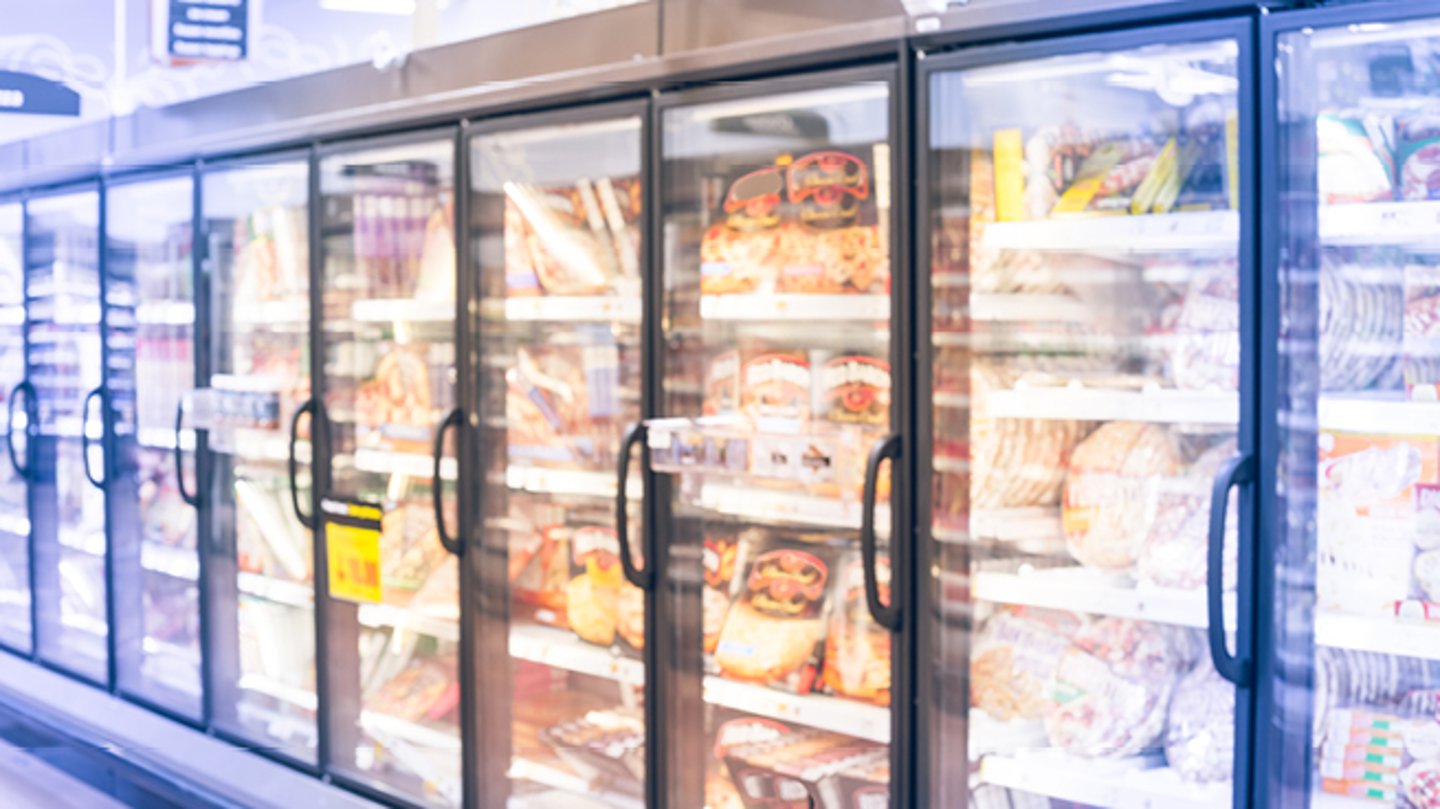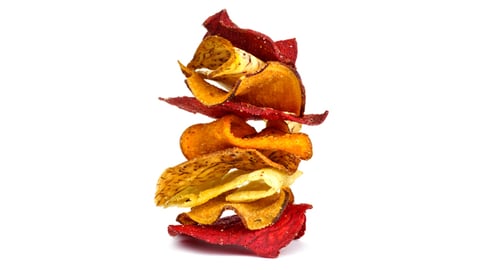What’s hot in the frozen food aisle
The early days of frozen meals call to mind a Rockwell-esque suburban tableau: a family gathered in the living room, hunched over fold-out trays and nibbling on a supper thawed and cooked in the microwave. The classic TV dinner was a concession to convenience, an occasion when quality and freshness could be sacrificed for the sake of a night off from food preparation and some extra time in front of the tube.
Over the years, though, the frozen food category has evolved. Frozen food products are marketing their health benefits, quality and global flavour profiles along with speed and ease of preparation. And brands are designing frozen foods for virtually every cooking appliance. Consumers want convenience as much as ever – but they’re no longer accepting compromise.
“The challenge for frozen meals is to make people feel better about eating frozen, and that comes down to innovation,” says Joel Gregoire, associate director, food and drink at Mintel. “You can either try to sway people by offering better quality products, or you can lean into convenience.”
READ: Traffic is heating up in the frozen food aisle
According to 2023 global research by Innova Market Insights, two in three consumers say they are “looking for simple and convenient ways to ensure my daily nutrients intake.” This, along with Innova’s finding that meat, fish, eggs, ready meals, side dishes and snacks combined for 54% of new frozen product launches in the past year, suggests that consumers are looking for substance along with efficiency.
“People are looking for expanded authentic flavours for meal and snacking options, while still engaging and growing in traditional categories with traditional flavours,” says Chris Roehl, vice-president, international at CJ Schwan’s, whose brand stable of frozen foods includes Red Baron, Bibigo and Pagoda. Consumer interest, he adds, in well-established frozen foods such as pizza remains high. With that in mind, here are a few of the trends heating up the category.
The frozen gourmand
Manufacturers are creating frozen foods that go beyond pizza, chicken fingers and hamburger patties. And things have changed even for these classic staples. An October 2023 report from U.S.-based The Food Industry Association (FMI), indicates that 38% of frozen food purchasers consume frozen products daily or every few days, while 66% believe the category offers a broad range of healthy options.
“Consumers are increasingly looking for healthier options in the frozen food aisle,” says Terry Samaroo, director of grocery for Ontario-based chain Nature’s Emporium, adding that plant-based foods have been a beneficiary of this trend. “This includes mainstream foods like empanadas and perogies being developed with plant-based ingredients, marking a notable trend towards healthier, more sustainable eating habits.” Samaroo names Amy’s Kitchen and Gardein as two frozen brands that have excelled in the plant-based space.
READ: Canadians are putting their personal health and wellness needs at the forefront
But, it’s not as if carnivores are being left behind. Products such as Loblaw’s President’s Choice (PC) Holiday Feast Turkey Stuffing Burgers, which launched this fall, promise a full meal experience – turkey, stuffing and dried cranberries – in a convenient format. PC has also tapped into consumers’ upscale pizza cravings with its Black Label line, emphasizing premium ingredients, hand-tossed crusts and stone-baked preparation in its margherita, diavola and funghi options.
Like PC, Schwan’s Red Baron frozen pizza brand distinguishes itself in the marketplace with elevated quality claims, including a variety of crust and topping options. But, Roehl notes the brand is mindful of appealing to convenience, citing Red Baron’s line of Deep Dish Pizza Singles, which cooks in just three minutes, as a prime example.
Likewise, Mintel’s Gregoire views gourmet frozen products as additive to the category, rather than replacing tried-and-true products. “There will always be a place for the single-serve, cheap and cheerful options, especially in a time of high inflation,” says Gregoire. “It’s like a tiering of the frozen aisle. You have different products at different price points with different quality expectations.”
Packaging power
Advances in packaging have made a significant impact on both the preparation possibilities and marketing of frozen foods. According to Gregoire, one of the most important developments, particularly for brands positioning themselves as a cut above cheap-and-cheerful, is transparency in the form of clear, vacuum-sealed products. One example that consumers have recently seen more of in freezer aisles is pizza supplied by restaurants such as Toronto’s Pizzeria Libretto.
“This packaging allows the product itself to do the talking,” says Gregoire. “If I’m showing the product, I’m standing behind the quality, and that can help you stand out in the frozen food aisle.”
Gregoire also points out that aligning a product with the appliances used to prepare it, can help brands connect with customers. Packaging that links products to the growing use of air fryers and innovations such as Bertolli’s frozen skillet meals, which includes pasta entrees such as chicken carbonara and Italian sausage and rigatoni, fit this bill.
“Being tied to different appliances can be important for consumers. It helps to build a connection to the food you’re buying,” Gregoire says, adding that retailers can reinforce this connection with in-store demonstrations.
Global flavours
As with almost every other aisle in the grocery store, the frozen section has evolved along with Canada’s increasingly diverse population to include products inspired by recipes from around the world.
“We’re seeing the frozen aisle evolve to meet the demand of newcomers and Canadians looking for diverse flavours, which has created a growing pocket of innovation in terms of global cuisines across the frozen category,” says Lynne Strickler, senior director of brand management and commerce marketing, Canada, Conagra Brands.
Among the 30-plus frozen items Conagra Brands has introduced in recent months are the previously-mentioned Bertolli skillet pastas as well as P.F. Chang’s Home Menu meals.
READ: As consumers embrace global foods, grocers look to diversify their offerings
“Our country’s multicultural landscape provides opportunities to delight people from all backgrounds, so we look into adjusting as necessary based on both local and international data, with the constant objective of satisfying our consumers’ needs and cravings,” she says.
CJ Schwan’s Roehl sees the most significant rise in Asian-inspired recipes, listing products from the Bibigo brand such as steamed dumplings, mandu, mini wontons and fried rice. “Bibigo brings authentic Asian flavour across a variety of segments,” he says. The company’s Pagoda brand is also getting in on the international act, with products such as egg rolls and crab Rangoon.
Gregoire believes part of the attraction of these diverse frozen cuisines is the opportunity to try something new without getting lost in an unfamiliar recipe. “Frozen meals are a great avenue for culinary experimentation,” Gregoire says. “They’re a great way to try international foods because they overcome intimidation about preparation.”
The little touches
While big, bold international flavours and packaging innovation are helping to spur frozen sales, Gregoire says it can be the little things that break the ice with consumers. For example, helping people imagine a product in a real-life situation.
Gregoire identifies McCain’s 9 Minute No Flip Potato Patties as an item that embodies this trend. “If you’ve ever tried to make breakfast in the morning for your family and you’ve got eggs, meat, hash browns and toast going, you have to be like an octopus. You have to work hard to time things right,” he says. “It sounds like a small thing, but remembering to flip your hash browns is an easy thing to forget.”
In other words, innovation can be as simple as devising and communicating a small problem a new product can solve.
This article first appeared in Canadian Grocer’s December 2023/January 2024 issue.



